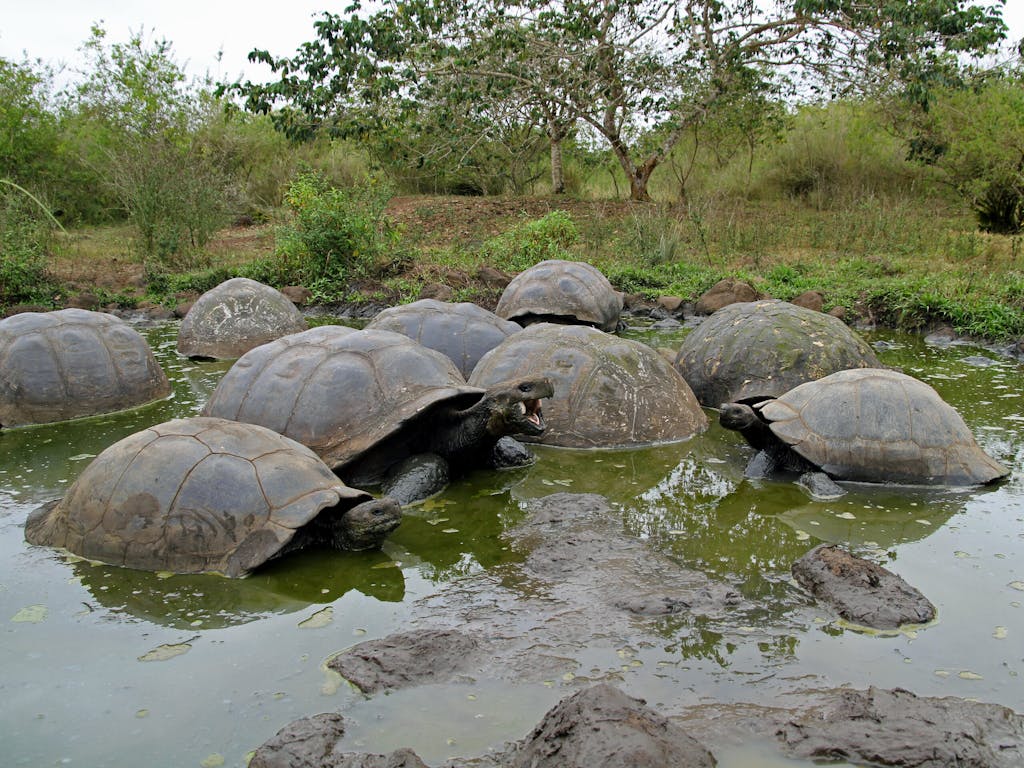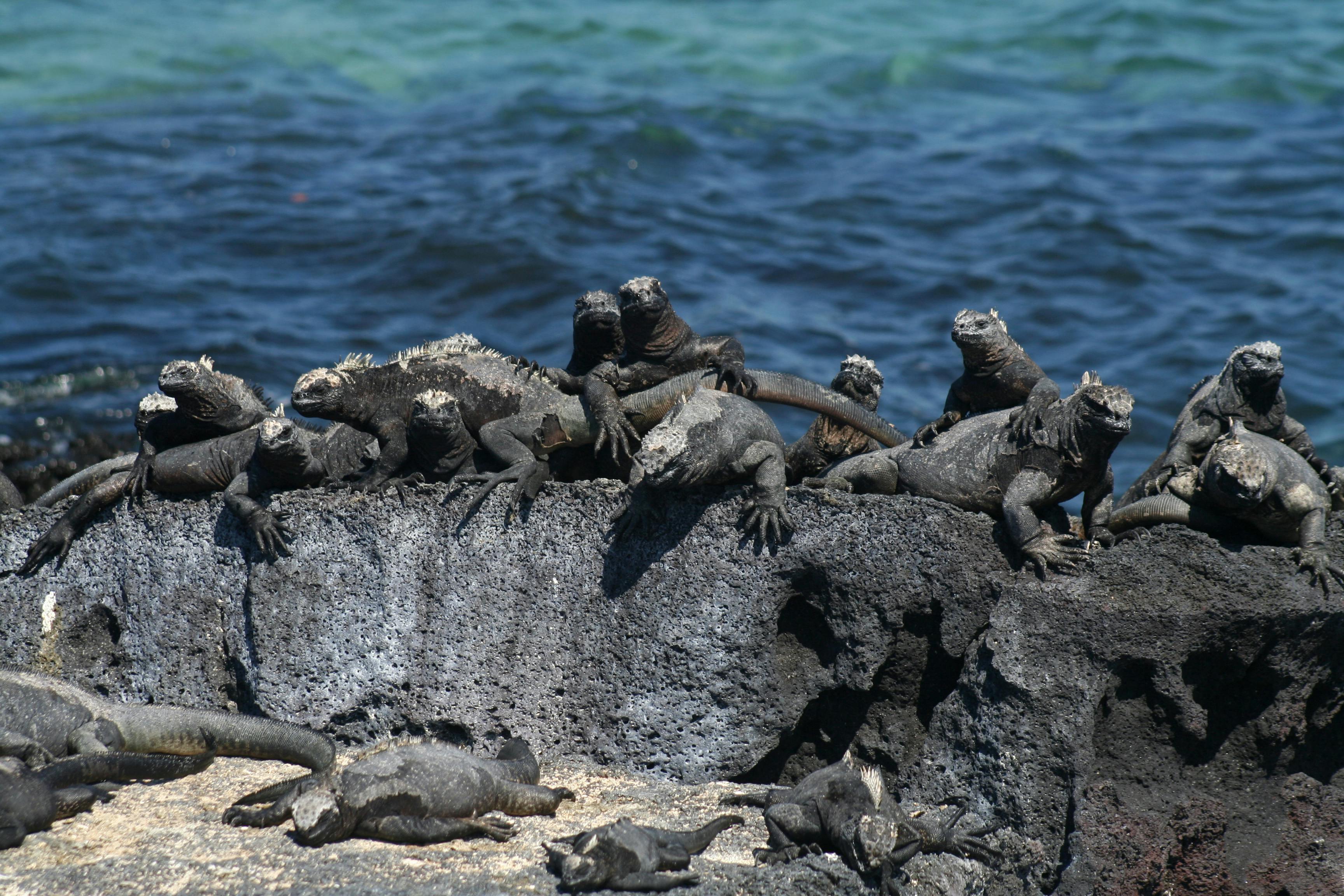What Galápagos Wildlife Can Teach Us About Natural Selection
In almost any place, wild animals tend to shy away from humans.
Except in the Galápagos.
These islands 600 miles off Ecuador are among the most-sought-after adventure travel destinations on Earth because their many unique fauna species are easily seen up close. It’s a great place to learn about natural selection.
The marine iguanas in this video epitomize the unique character of the islands’ ecosystem: These are the only lizards on Earth that have adapted to feed underwater.
Their diet consists almost entirely of the saltwater algae that this iguana carefully strips from nearshore rocks and reefs. The quarter-million Galápagos marine iguanas, found only here, have specially adapted to their environment.
They can remain submerged for as long as 30 minutes. Their special glands extract and exude the salt they take in, explaining the white, crusty sheen most exhibit on land. Unlike other lizards, they have rounded snouts, so they can easily harvest the algae and won’t harm the reefs and rocks on which the algae live.
Distinct adaptations like these intrigued naturalist Charles Darwin when he visited the Galápagos in 1835 and later led him to formulate the theory of species adaptation, or natural selection, explaining much of nature’s incredible diversity.
Although its exact mechanisms have been more widely identified in the last century and a half, evolution remains the cornerstone of our understanding of nature. It’s a wonderful idea about the diversity, creativity and adaptability of life, and the Galápagos are among the best places on Earth to witness that.
These islands are so remote (about 620 miles or 1,000 kilometers from mainland South America) that familiar species, such as iguanas, finches, turtles and more, have evolved unique forms here. Because the islands were barely inhabited until recently, human activity created little pressure on the ecosystem. The flightless cormorant, for instance, lost its airborne abilities because there was no need.
Some species even differ from island to island, so specific are the workings of evolution.
Fasting for a year

The Galápagos giant tortoise is the best-known example of that: a dozen subspecies inhabit 10 islands. Their special, mind-boggling adaptation is an ability to survive up to a year without food or water.
Aside from the marine iguana, the islands have two other iguana species — a more “ordinary” land iguana, and a pink (yes, really) iguana. Owls and hawks have their distinct representatives here, as do seals and sea lions, snails and snakes and even bees.
The government of Ecuador understands the immense natural value and potential vulnerability of the islands’ animals and regulates visitors activities. Travelers to natural areas, which comprise almost all the islands, must be accompanied by licensed guides. They may not touch or feed the animals, no matter how approachable they are, and they must follow other guidelines that restrict littering, smoking and such. Even though wild animals here are approachable, it’s best, and most compassionate, to give them space.
Intrigued by these fascinating islands and animals? Learn more here.
